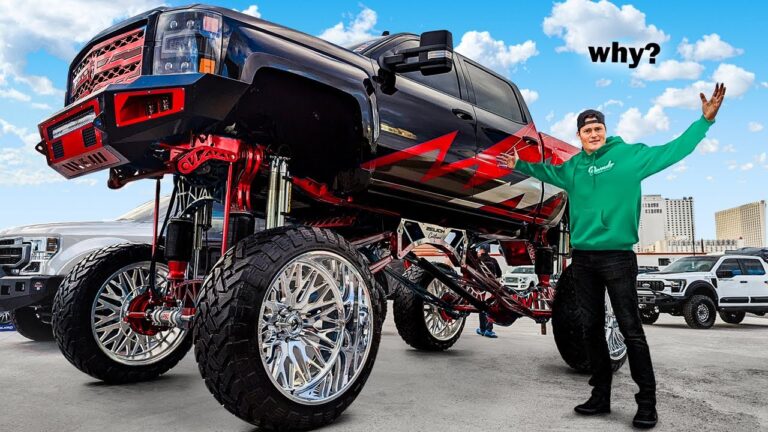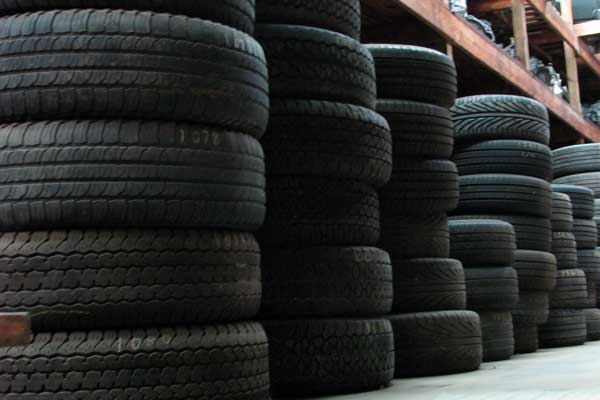French Car Brand With A Double Chevron Badge
French Car Brand With A Double Chevron Badge cars.truckstrend.com
In the vast and competitive landscape of the global automotive industry, certain brands stand out not just for their vehicles, but for a unique philosophy, an indelible history, and an instantly recognizable emblem. Among these, one French marque proudly displays a distinctive double chevron badge, symbolizing a legacy of innovation, comfort, and unconventional design. This brand is, of course, Citroën. For over a century, Citroën has challenged automotive norms, delivering cars that are as much statements of engineering prowess as they are works of art, offering a driving experience often described as unparalleled in its blend of ride comfort and distinctive style.
This comprehensive guide will delve deep into the world of Citroën, exploring its fascinating origins, its design and engineering philosophies, its current offerings, and practical insights for anyone considering becoming a part of its unique legacy.
French Car Brand With A Double Chevron Badge
History and Legacy: The Genesis of the Chevrons
The story of Citroën begins with André Citroën, a visionary entrepreneur and engineer who, after a trip to the United States and observing Henry Ford’s mass production techniques, brought the concept to France. His initial foray into industry involved manufacturing gears, specifically double helical or "herringbone" gears, which were quieter and more efficient than traditional straight-cut gears. It was this innovative gear design that inspired the iconic double chevron logo – two inverted Vs representing the teeth of these gears.
In 1919, André Citroën pivoted from gears to cars, launching the Type A, the first mass-produced European car. From the outset, Citroën differentiated itself with audacious marketing stunts (like illuminating the Eiffel Tower with the Citroën name) and a relentless pursuit of innovation.
Key milestones in Citroën’s rich history include:
- Traction Avant (1934): A revolutionary car featuring monocoque construction (unibody), front-wheel drive, and independent suspension. It set new standards for handling and safety and remained in production for over two decades.
- 2CV (1948): Designed as a "car for the people," the 2CV was simple, robust, and incredibly versatile. Its soft suspension allowed it to traverse rough terrain with ease, becoming a symbol of French ingenuity and practicality.
- DS (1955): Perhaps Citroën’s most iconic creation, the DS was a technological marvel. Its futuristic design, self-leveling hydropneumatic suspension, power steering, and swiveling headlights made it an instant legend, earning it the nickname "Goddess" (Déesse in French). It set benchmarks for comfort, safety, and aerodynamics that competitors took years to match.
- CX, XM, C6: Successors to the DS that continued the tradition of advanced hydropneumatic suspension and distinctive design, albeit with varying commercial success.

Citroën’s history is a testament to its commitment to pushing boundaries, even if it sometimes led to financial challenges. Its journey, including periods under Michelin and eventually joining Peugeot (leading to PSA Group, now part of Stellantis), has always been marked by a desire to innovate and offer something truly different.
The Citroën Identity: Design, Comfort, and Innovation
At its core, Citroën’s identity revolves around three pillars: distinctive design, unparalleled comfort, and technological innovation.
Design Philosophy: Bold and Unconventional
Citroën vehicles have rarely conformed to mainstream aesthetics. From the streamlined elegance of the DS to the quirky charm of the 2CV and the modern lines of the C4 Cactus, Citroën designs are often polarizing but always memorable. They embrace asymmetry, unique lighting signatures, and bold proportions, aiming to create vehicles that are instantly recognizable and reflect a playful yet sophisticated spirit. This approach allows Citroën cars to stand out in a sea of increasingly similar automotive designs.
The Quest for Unrivalled Comfort
Comfort has been a defining characteristic of Citroën since its inception. While the legendary hydropneumatic suspension system (which provided a "magic carpet" ride) was gradually phased out due to complexity and cost, Citroën has not abandoned its pursuit of ultimate comfort.
Today, this philosophy is embodied in the Citroën Advanced Comfort® program, which focuses on four key areas:
- Ride Comfort: Achieved through Progressive Hydraulic Cushions (PHC), which act as secondary dampers, absorbing major impacts and providing a smoother, more composed ride over various surfaces.
- Seating Comfort: Advanced Comfort Seats feature unique foam densities, special padding, and broad designs to offer exceptional support and softness, making long journeys remarkably relaxing.
- Interior Comfort: This includes optimizing acoustics to reduce noise and vibrations, creating a serene cabin environment. It also encompasses spaciousness, clever storage solutions, and thoughtful ergonomics.
- Practical Comfort: User-friendly technology, intuitive infotainment systems, and connectivity features that simplify the driving experience and enhance daily usability.
Technological Innovation
Beyond suspension, Citroën has a history of introducing groundbreaking technologies. Features like self-leveling headlights (DS), single-spoke steering wheels (DS, CX), integrated turn signals, and early adoption of digital dashboards underscore a commitment to forward-thinking engineering that genuinely improves the user experience. Modern Citroëns continue this trend with features like head-up displays, advanced driver-assistance systems, and seamless smartphone integration.
Modern Citroën: A Diverse and Evolving Lineup
Today, Citroën’s model range caters to a broad spectrum of needs, from urban mobility to family adventures, all while retaining the brand’s core values. The current lineup reflects a strategic shift towards more accessible, comfort-focused vehicles, often in popular SUV and crossover segments, alongside a strong push into electrification.
- Citroën C3: A stylish and customizable compact hatchback, known for its comfortable ride and distinctive "Airbumps" (protective side panels).
- Citroën C3 Aircross SUV: A compact SUV that combines bold design with versatility and the Advanced Comfort program.
- Citroën C4 and ë-C4: A unique fastback-SUV crossover, offering a bold design and the choice between petrol/diesel engines or a fully electric powertrain (ë-C4). It heavily features PHC and Advanced Comfort Seats.
- Citroën C5 Aircross SUV: The flagship SUV, focusing heavily on comfort with PHC and Advanced Comfort Seats, along with a spacious and modular interior. Available with petrol, diesel, and plug-in hybrid options.
- Citroën Ami: A revolutionary electric quadricycle designed for urban mobility. Ultra-compact, affordable, and accessible to young drivers (in some markets), it embodies Citroën’s innovative spirit for sustainable city transport.
- Citroën ë-C3: A new all-electric compact car, aiming to make EV ownership more affordable and accessible, while still delivering Citroën’s signature comfort.
The modern range demonstrates Citroën’s adaptability, embracing current market trends while injecting its unique brand DNA into every vehicle.
Why Choose a Citroën? Practical Advice and Considerations
Opting for a Citroën is often a choice for those who appreciate distinctiveness, comfort, and value.
Benefits of Owning a Citroën:
- Unrivaled Comfort: If ride quality and seating comfort are high priorities, Citroën, especially models with PHC and Advanced Comfort Seats, stands out.
- Distinctive Style: Citroëns rarely blend into the crowd. Their unique designs offer a refreshing alternative to more conventional cars.
- Good Value: Compared to some rivals, Citroëns often offer a strong combination of features, comfort, and style for their price point, both new and on the used market.
- Practicality: Many models feature clever interior layouts, ample storage, and versatile seating, making them highly functional for daily life.
- Innovation: A history and present of introducing features that genuinely enhance the driving and ownership experience.
Important Considerations for Buyers:
- Test Drive Extensively: Experience the unique comfort firsthand. Pay attention to how the car handles different road surfaces.
- Maintenance (Older Models): While modern Citroëns are straightforward, older models with hydropneumatic suspension may require specialized knowledge for maintenance. Ensure you have access to a qualified mechanic if considering a classic.
- Resale Value: Historically, Citroëns have sometimes experienced quicker depreciation than some German or Japanese competitors. This can be a disadvantage if selling quickly but a significant advantage if buying used.
- Parts Availability: For very old or rare models, parts can be harder to source, though common parts for popular models are readily available.
Tips for Prospective Owners:
- Define Your Needs: Are you prioritizing urban agility (Ami, C3), family space (C5 Aircross), or electric efficiency (ë-C4, ë-C3)?
- Explore Trims: Citroën offers various trim levels. Understand the features included in each to match your preferences and budget.
- Consider Electric: With models like the ë-C4, ë-C3, and Ami, Citroën offers compelling electric options for those looking to go green.
- Engage with the Community: Citroën has a passionate owner community. Online forums and clubs can be valuable resources for advice and support.
Challenges and Solutions
While Citroën offers many advantages, like any brand, it faces specific challenges.
- Perception: Some consumers, particularly outside of France, may still view Citroën as a "quirky" brand or less "premium" than some rivals, affecting its market positioning.
- Solution: Citroën actively works to re-educate the market, emphasizing its unique strengths in comfort and design, and highlighting its modern technological advancements. The "Citroën Advanced Comfort" program is a direct response to this, clearly articulating its unique selling proposition.
- Resale Value: As mentioned, historical depreciation can be a concern for some buyers.
- Solution: Focus on the initial purchase value and the unique ownership experience. For used buyers, this translates into excellent value for money. Citroën also offers attractive financing and leasing options to mitigate long-term ownership costs.
- Legacy of Complexity: The reputation for complex hydropneumatic systems from the past can sometimes deter buyers, even though modern Citroëns are less complex.
- Solution: Emphasize that modern Citroëns, while innovative, use more conventional and reliable suspension systems (like PHC) and widely understood technologies, making them as easy to maintain as competitors.
Table of Representative Citroën Model Price Ranges (Indicative)
Please note: Prices are highly variable based on market (country), trim level, options, engine choice (petrol, diesel, hybrid, electric), and current promotions. The ranges below are illustrative for base to mid-range models in a generic European market and should be confirmed with local dealerships.
| Model Name | Category | Key Feature(s) | Indicative Starting Price Range (EUR) |
|---|---|---|---|
| Citroën C3 | Compact Hatchback | Customizable design, Advanced Comfort Seats | €17,000 – €22,000 |
| Citroën C3 Aircross SUV | Compact SUV | Elevated seating, Versatile interior | €23,000 – €28,000 |
| Citroën C4 | Fastback Crossover | Progressive Hydraulic Cushions (PHC), Bold Design | €25,000 – €32,000 |
| Citroën ë-C4 | Electric Fastback | Full Electric, PHC, Advanced Comfort Seats | €36,000 – €42,000 |
| Citroën C5 Aircross SUV | Mid-size SUV | Ultimate Comfort (PHC, Adv. Seats), Spacious | €30,000 – €45,000 (PHEV higher) |
| Citroën Ami | Urban Quadricycle | Ultra-Compact Electric, Accessible (no license in some markets) | €8,000 – €10,000 |
| Citroën ë-C3 | Electric Hatchback | Affordable EV, PHC, Advanced Comfort Seats | €23,000 – €28,000 |
Frequently Asked Questions (FAQ)
Q1: Is Citroën a reliable car brand?
A1: Modern Citroën vehicles generally offer good reliability, especially those manufactured within the Stellantis group. While some older models had reputations for complexity (due to advanced systems like hydropneumatics), contemporary Citroëns use proven components and technologies, aligning with industry reliability standards. Regular maintenance is key, as with any car.
Q2: What is Citroën’s Advanced Comfort program?
A2: The Advanced Comfort program is Citroën’s modern approach to maximizing occupant well-being. It focuses on four pillars: ride comfort (using Progressive Hydraulic Cushions), seating comfort (with special Advanced Comfort Seats), interior comfort (optimizing acoustics and space), and practical comfort (user-friendly technology). It’s designed to provide a smooth, quiet, and relaxing journey.
Q3: Are Citroën cars expensive to maintain?
A3: For modern Citroën models, maintenance costs are generally comparable to other mainstream European brands. Parts are readily available, and servicing can be done at authorized dealerships or independent garages. Older models with complex systems (like hydropneumatic suspension) might incur higher specialized maintenance costs, but these are less common on the road today.
Q4: What is the significance of the double chevron logo?
A4: The double chevron logo is inspired by the double helical (herringbone) gears that André Citroën, the founder, manufactured before venturing into car production. The two inverted Vs represent the interlocking teeth of these highly efficient gears, symbolizing precision, innovation, and forward movement.
Q5: Where are Citroën cars manufactured?
A5: Citroën cars are manufactured in various locations across Europe and other parts of the world. Major production sites include France, Spain, and Slovakia, with specific models produced in different plants. As part of Stellantis, production can also leverage other group facilities.
Q6: Is Citroën part of a larger automotive group?
A6: Yes, Citroën is part of Stellantis, one of the world’s leading automakers. Stellantis was formed in 2021 through the merger of Groupe PSA (which included Peugeot, Citroën, DS Automobiles, and Opel/Vauxhall) and Fiat Chrysler Automobiles (FCA). This affiliation provides Citroën with significant resources for research, development, and global market reach.
Conclusion
The French car brand with the double chevron badge, Citroën, is more than just a manufacturer of vehicles; it is a custodian of a unique automotive philosophy. From its groundbreaking origins marked by audacious engineering and marketing to its modern commitment to distinctive design and unparalleled comfort, Citroën has consistently carved its own path. It appeals to those who value individuality, seek a serene driving experience, and appreciate thoughtful innovation.
In an increasingly homogenous automotive world, Citroën stands as a vibrant testament to the power of original thinking. It reminds us that cars can be more than just transport; they can be expressions of personality, havens of comfort, and symbols of ingenuity. As Citroën continues to evolve, embracing electrification and new mobility solutions, its double chevron badge remains a proud emblem of a brand that dares to be different, always putting human comfort and ingenuity at the heart of its creations.



